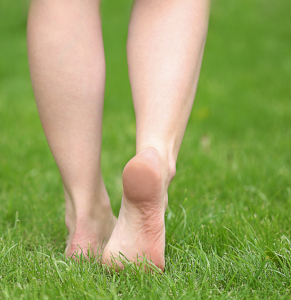Grounding – shifting from surviving mode to thriving
Very often I feel like there is a tornado inside of my head, and yoga allows me to stay still in the middle of that chaos. It allows me to find the eye of the tornado, the still point where you can see everything flying around you and yet you are not impacted, the houses and the cars. I’m sure you’ve seen it in the movie before. Now imagine those things flying around are your thoughts, your feelings, your memories or your plans for the future. What happens when you grab one of them? You will go around in a circle with them. And to get back to that still point you have to let go. Ground yourself and let go.
Grounding is a practice that involves reconnecting with the present moment and anchoring oneself in reality. Here are some common grounding techniques we explored in the class last month:
Walking barefoot on grass: This technique involves physically connecting with the earth by removing shoes and socks and allowing your bare feet to touch the grass. Whether it’s a lush green lawn or crisp winter snow, the sensation of the ground beneath your feet can help you feel more rooted and connected to nature.
5, 4, 3, 2, 1 technique: This technique engages the senses to bring awareness to the present moment. Start by naming 5 things you can see, 4 things you can hear, 3 things you can touch, 2 things you can smell, and 1 thing you can taste. This exercise shifts your focus away from racing thoughts and redirects it to your immediate surroundings.
Splash of water: Splashing cold water on your face or taking a quick shower can snap you out of a spiral of anxious thoughts. The sensation of water can be refreshing and invigorating, helping you to feel more awake and alert.
Furry pillow: Holding or cuddling a soft, furry pillow can provide a comforting tactile sensation. The texture of the pillow can be soothing and grounding, helping to calm the nervous system and promote relaxation.
Mantra or counting: Focusing on a repetitive phrase or counting can help quiet the mind and bring attention to the present moment. Mantras like “I am calm and centred” or simply counting from one to thirty can serve as anchors, preventing your thoughts from drifting into worry or rumination. We’ll explore more of that in April’s workshop.
These grounding techniques can be practiced individually or combined depending on what works best for you. The key is to experiment with different methods and find what resonates with your unique needs and preferences. By incorporating grounding practices into your daily routine, you can cultivate a greater sense of inner peace, resilience, and well-being.
Posted in Newsletter by Anna Smithers with comments disabled.
